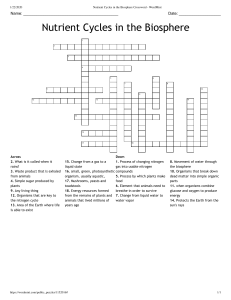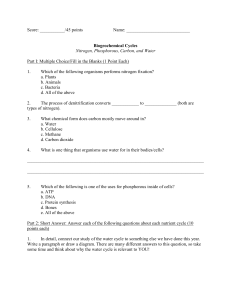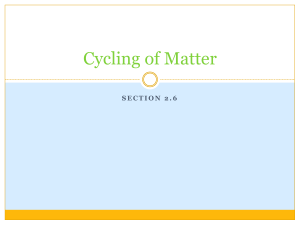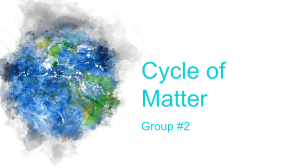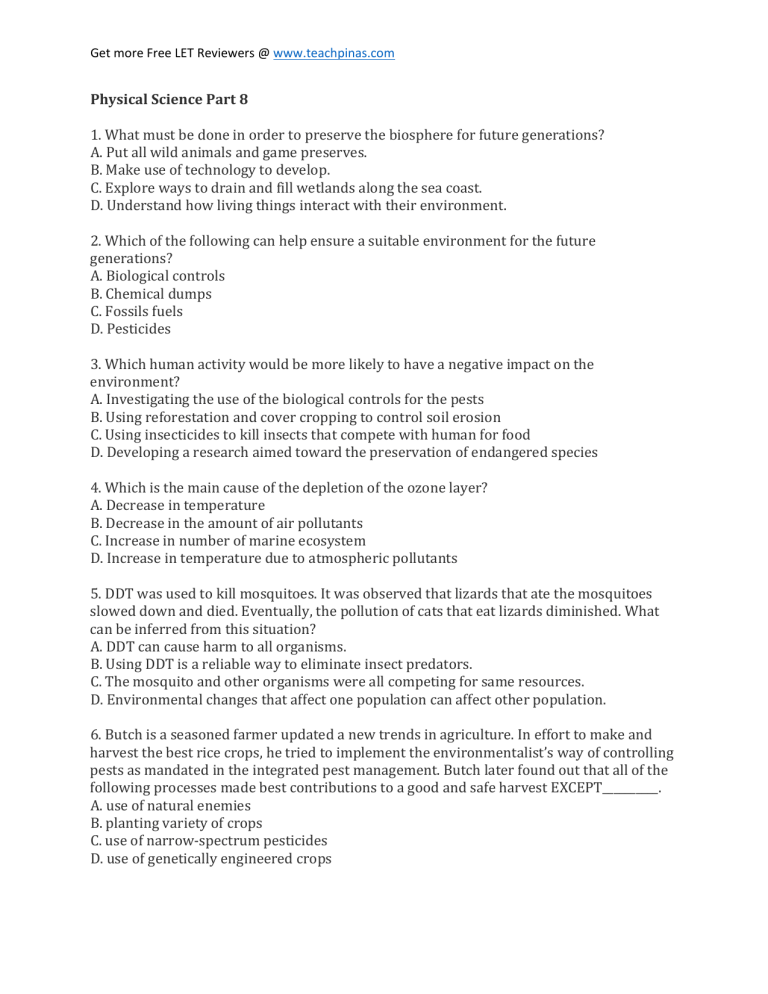
Get more Free LET Reviewers @ www.teachpinas.com Physical Science Part 8 1. What must be done in order to preserve the biosphere for future generations? A. Put all wild animals and game preserves. B. Make use of technology to develop. C. Explore ways to drain and fill wetlands along the sea coast. D. Understand how living things interact with their environment. 2. Which of the following can help ensure a suitable environment for the future generations? A. Biological controls B. Chemical dumps C. Fossils fuels D. Pesticides 3. Which human activity would be more likely to have a negative impact on the environment? A. Investigating the use of the biological controls for the pests B. Using reforestation and cover cropping to control soil erosion C. Using insecticides to kill insects that compete with human for food D. Developing a research aimed toward the preservation of endangered species 4. Which is the main cause of the depletion of the ozone layer? A. Decrease in temperature B. Decrease in the amount of air pollutants C. Increase in number of marine ecosystem D. Increase in temperature due to atmospheric pollutants 5. DDT was used to kill mosquitoes. It was observed that lizards that ate the mosquitoes slowed down and died. Eventually, the pollution of cats that eat lizards diminished. What can be inferred from this situation? A. DDT can cause harm to all organisms. B. Using DDT is a reliable way to eliminate insect predators. C. The mosquito and other organisms were all competing for same resources. D. Environmental changes that affect one population can affect other population. 6. Butch is a seasoned farmer updated a new trends in agriculture. In effort to make and harvest the best rice crops, he tried to implement the environmentalist’s way of controlling pests as mandated in the integrated pest management. Butch later found out that all of the following processes made best contributions to a good and safe harvest EXCEPT__________. A. use of natural enemies B. planting variety of crops C. use of narrow-spectrum pesticides D. use of genetically engineered crops Get more Free LET Reviewers @ www.teachpinas.com 7. What is the most important factor for the success of animal population? A. Adaptability B. Interspecies activity C. Natality D. Unlimited food 8. Why dues starvation occur? A. There is not enough fertile land worldwide on which to grow food. B. Forces in nature (drought, pests, floods ) wipe out food supplies. C. Population is growing at a faster rate than the world’s ability to produce. D. Some parts of the world lack food while other parts of the world produce more than they consume. 9. Which of the following presents the greatest threat to the survival of numerous plant and animal species? A. Greenhouse effect B. Continued burning of fossil fuel C. Disappearance of world’s rainforest D. Dumping of toxic waste in the least industrialized nations 10. Which factors BEST explains why the human population has grown so rapidly over the last 1000 years? A. Humans have decreased their reliance on natural resources. B. Humans have increased the amount of resources available on Earth. C. Humans have increased the carrying capacity of the biosphere for the population. D. Humans have developed physical characteristics that increase their competitive advantage. 11. Which human activity causes maximum environmental pollution having regional and global impact? A. Agriculture B. Industrialization C. Mining D. Urbanization 12. Which of the following statement in relation to sustainable development is FALSE? A. Sustainability has the main objective of purely focusing on the natural environment. B. Sustainable development of various countries and the entire world is the only solution left with mankind to survive for a longer period on Earth. C. Sustainable development not only considers the protection of the environment but also the maintenance of economic viability as well as social and ethical considerations. D. Sustainable development is defined as the development that meets the needs of present without compromising the ability of our future generation to meet their own needs. 13. What is the process of converting nitrate to nitrogen gas and nitrous oxide? A. Ammonification Get more Free LET Reviewers @ www.teachpinas.com B. Denitrification C. Nitrogen fixation D. Transpiration 14. Which of the following chemicals enters living organism primarily from the atmosphere rather than from rocks or soil? A. Calcium B. Carbon C. Sodium D. Sulfur 15. What is the conversation of atmospheric free nitrogen gas to ammonia which occurs through the activities of certain bacteria and cyanobacteria? A. Denitrification B. Nitrification C. Nitrogen fixation D. Oxidation 16. How do animals get the nitrogen they need? A. Directly from bacteria in the soil B. From the process of denitrification C. By breathing in atmospheric nitrogen D. By consuming plants or other animals 17. The following are ways by which phosphorous enters the environment EXCEPT____________. A. Run off B. Animal waste C. Erosion of rocks D. Photosynthesis in plants 18. Because of biogeochemical cycling? A. nutrients are circulated through the biosphere. B. the Earth creates new chemicals that replace those that were used up by organisms. C. organisms eventually run out of needed elements, compounds and other form of matter. D. human activity has no effect on elements, chemical compounds, and other form of matter 19. Which of the biogeochemical cycles can impact all of the other directly? A. Carbon cycle B. Hydrologic cycle C. Nitrogen cycle D. Phosphorous cycle 20. What human activity has added the most carbon in the atmosphere? A. Burning fossils fuels B. Mining fossil fuel Get more Free LET Reviewers @ www.teachpinas.com C. Increasing soil erosion D. Cutting down the rainforests Get more Free LET Reviewers @ www.teachpinas.com Answer Keys: 1. D 2. A 3. C 4. D 5. D 6. C 7. A 8. D 9. C 10. C 11. B 12. A 13. B 14. B 15. C 16. D 17. D 18. A 19. B 20. A
